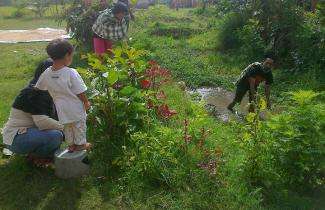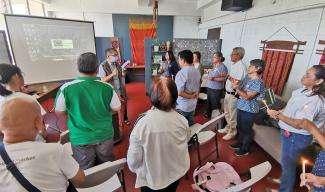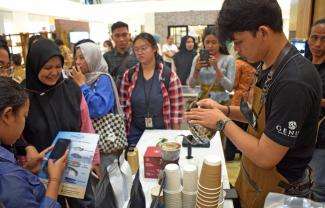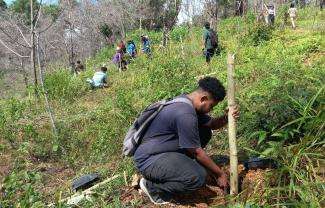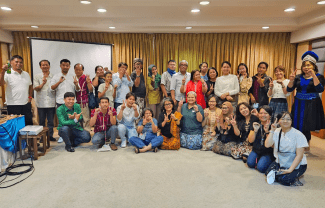By Mukhlis Paraja
The Pattallassang indigenous community in the village of Pao of South Sulawesi's Gowa district live in an area where rice farming and horticulture are highly dependent on chemical fertilizers. Although the price of the chemical fertilizers is very expensive, the community has no choice but to continue buying them.
Out of concern for the fertilizers' impacts on health and the environment, the indigenous community is trying to revive organic farming techniques prescribed in their local wisdom. The community discussed how to revive their tradition of organic farming, and they agreed to seek out a network that has succeeded in developing organic agriculture. Garut in West Java was chosen and a group sent there to study at the Sekolah Ecologi Sawah and Kebun Pesantren At-Thariq.
In Garut, the group learned many things such as how to manufacture organic fertilizers using Azola (a type of aquatic fern) , which up till now has hampered the growth of paddy in our fields. Since rotting Azola is a favorite food of herons, our paddy would often be trampled by flocks of herons. People would get rid of the problem using toxic chemicals
The group also learned how to make organic fertilizer from cow dung and weeds to produce a liquid organic fertilizer. They also learned about the advantages of intercropping to prevent pest attacks, and how to make natural pesticides from taro leaves, red onion, and tobacco. (Luckily taro leaves are abundant in Pattallassang.)
The group heard about the “closer to market concept, which aims to reduce spending in the household by using vacant land uaround the house so kitchen needs can be obtained easily and quickly without exposure to chemicals.
The management of organic seeds was also explore from how to pick seeds for quality to drying them in ways to avoid pests and diseases.
The importance of record keeping was emphasized in the training. "Record keeping is very important in organic farming to preserve our learning for ourselves and the community at large," said Ms. Nisa, co-found of the Garut Pesantren.
The key to success in organic farming is community organizing, according to Ibang Lukman, the head of the Pesantren. He instructed the group about various issues in community organizing like principles and strategies. He also noted the role of the media in promoting organic farming.
Putting Learning to Practice: The Revival of Organic Farming in One Indigenous Community
After returning home from learning about organing farming in Garut, West Java, we shared what welearned with the indigenous community in Pattallassang. The community welcomed the lessons and felt that many are applicable in Pattallassang. With the goal of reducing the dependence on chemical fertilizers, the community agreed to help aeach other succeed in organic farming.
The community is excited to make liquid organic fertilizer from cow dung, weeds, poultry manure, mud, and water. People also experiment with liquid fertilizer composed of leftover sawdust, salt, and water. Women are now making organic fertilizer from kitchen waste. The community has also substituted charcoal for the urea fertilizer that was previously being used.
Once the mixtures were complete, they were placed in metal drums and plastic containers to await fermentation. Meanwhile, the community is determining which areas to select for demonstration plots. The land is being divided into different zones for rice, fisheries, vegetables, timber, and medicine. This process was completed collaboratively by community members.
*The author is a member of Pattallassang's indigenous community who traveled with other community members to Garut, West Java for six days in late November 2013.
